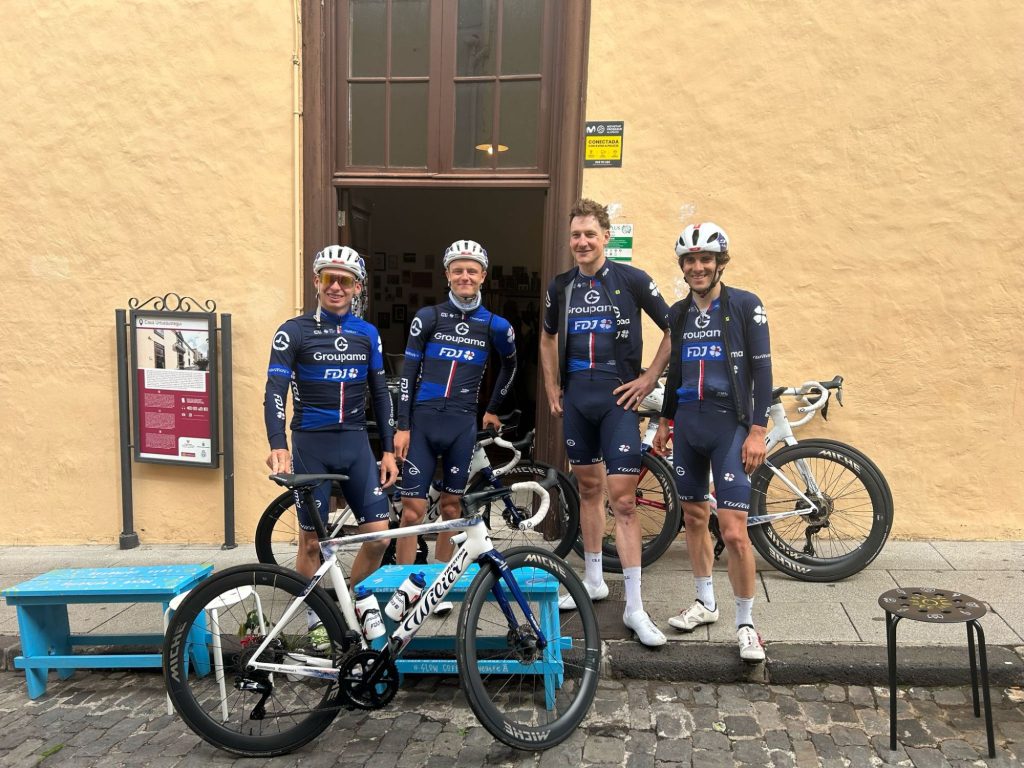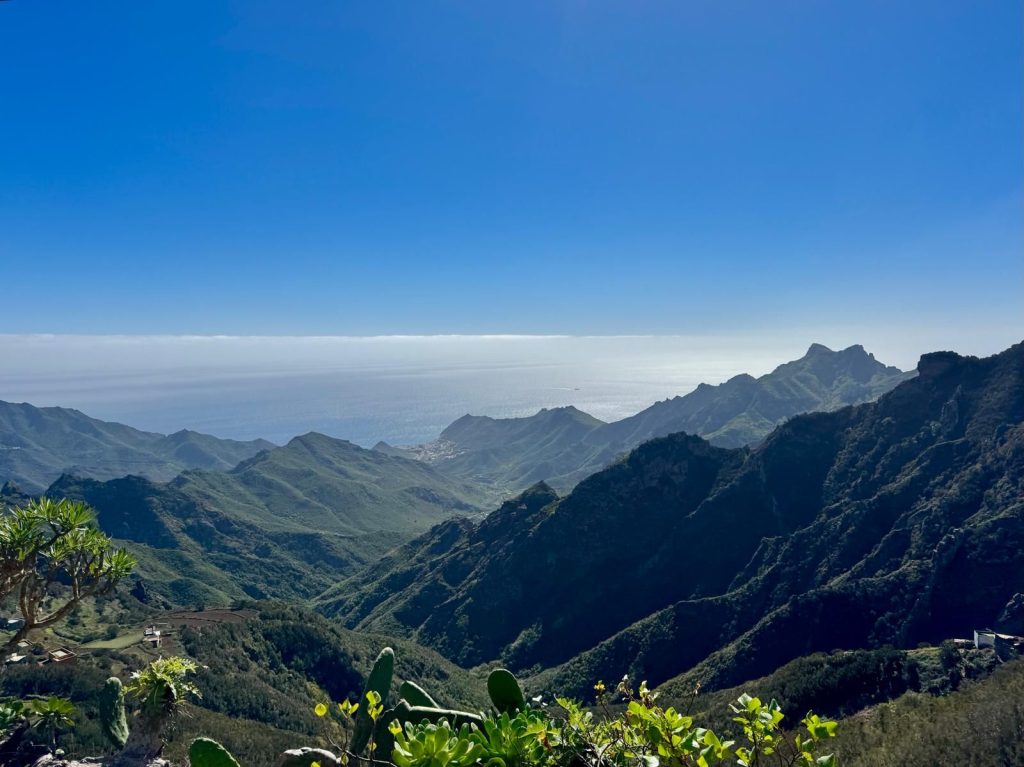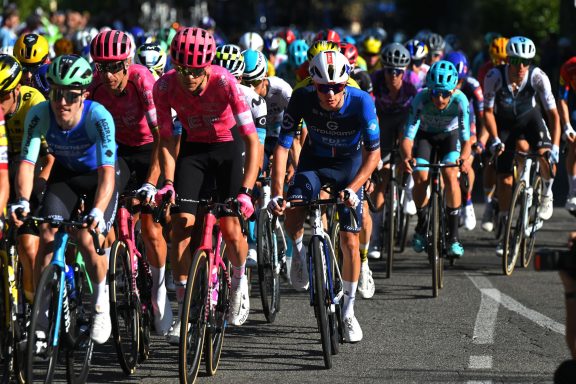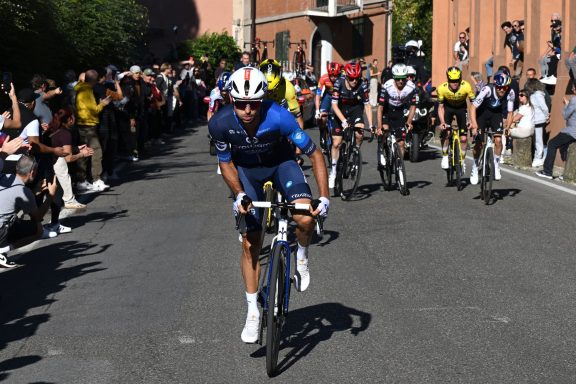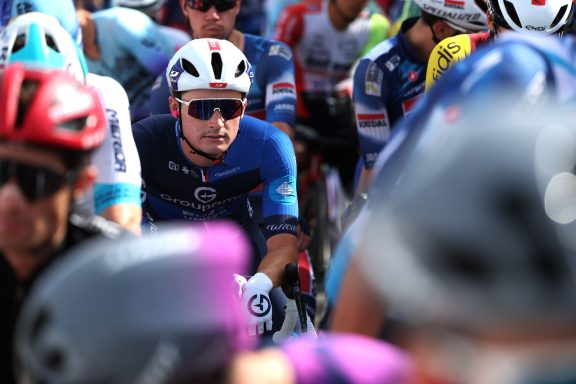On Tenerife Island, off the west coast of Africa, Guillaume Martin-Guyonnet truly launched his 2025 season. Surrounded by several of his new teammates, the 31-year-old Frenchman covered the slopes of the Teide volcano for the very first time, during a three-week altitude training camp. As the latter has just come to an end, he agreed to tell us about this discovery.
First, I have a long-standing experience with altitude training camps. I was already starting to do some when I was an amateur rider, more than ten years ago. In France, I was one of the first at a time when it was not something really developed, nor organized by the teams. Then I joined the professional ranks, and I would do at least three of them a year. Over ten years of career, that’s quite a few (smiles)…. I’ve been able to explore different locations over time. My favorites, or at least the ones I’ve been to most often, are Etna in Sicily, Sierra Nevada in Spain, and I’ve also been to Tignes several times, or Prémanon in a hypoxic chamber.
Until then, I had never been to Teide for logistical or organizational reasons. It wasn’t really a lack of will. That being said, it’s still quite far away and it’s also true that I prefer, as far as possible, to limit long trips for various reasons, especially ecological ones. So I wasn’t obsessed with the idea of going to Tenerife either. It’s of course more difficult in January, but in May for example, I would always prefer to go to the French Alps, which I can reach by train. I knew, however, that the team was used to Teide, and they knew that I had a certain appetite for altitude camps. From the moment I joined them, it seemed quite obvious to me that I was going to have my first experience here.
“I was much more charmed by the northern part of the island”
Before setting foot here, I was expecting long, fairly linear climbs, and from that point of view, I was not disappointed (smiles). You can almost climb straight from sea level to the top of the volcano. On the other hand, I thought it would be greener, a little lush by the sea, a little more tropical. Yet, it is really dry. It is more like a huge rock in the middle of the sea. The arid nature of the island is really what struck me when I arrived. I knew this setting from my experiences on Etna, but there are actually quite some cultivations at the foot of Etna. Here, there are relatively few habitations and almost no cultivation, especially on the southern slope from which I arrived. The south of the island, precisely, is not to my taste. There is mass tourism there and I don’t enjoy riding in that area. On the other hand, I was much more charmed by the northern part, with sorts of cliffs that drop into the sea. It is a bit greener, more humid. You see landscapes that could be taken from a movie.
Human activity has for sure developed a lot in recent years. This is currently the low season, but at the summit, it is still quite touristy! During the day, we see quite a few people around the hotel. It must be said that there is a real concentration because there is almost nothing at the top. Everyone comes to eat at the hotel, everyone goes to the same spots. In the end, we don’t feel cut off from the rest of the world at all. As for the altitude, I’m still experimenting with it, but I feel like I’m ‘suffering’ less from it here compared to other places I’ve been. My monitoring data are also a little higher than usual. Is this because I came to the camp a bit fresher or because of a slightly different composition of the air? I couldn’t say. In any case, I had no problems acclimatizing.
“We can stay up there for almost an hour, on a plateau”
In the past, I often did part of my altitude training camps alone. Generally, I was by myself or with my partner for a week, then my team would join me for the last ten or fifteen days. It is a set up that suited me well, because I am someone who likes his freedom, quite autonomous. I still am today. For example, I like to map out my routes, go where I want to go, and the team coaches encourage me to make suggestions in this regard. Even though I was followed from start to finish on this training camp, the coaches were in tune with me. It allowed me to peer into the routes and discover steeper climbs than the ones we usually do.
Here, a typical day starts with sharing our monitoring data with the coach in the morning: namely oxygen saturation, measured using an oximeter that we wore during the night, and the heart rate of the night. We also have daily nutritional monitoring, and a daily weigh-in as far as I’m concerned. Then comes breakfast, of course, and before leaving for training, we have a muscle warm-up. Then, we descend… Or not, actually. This is different from other places in altitude. Here, we can stay almost an hour up there, on a plateau. However, most of the training takes place down there. We try not to add too much fatigue and not to stay too long in altitude. During the ride, there are technical breaks to take off warm clothes when we get down there, where it’s quite warm, and during the “easier” training, we can also allow ourselves a little coffee break. We usually return at the beginning or middle of the afternoon. Once we get back from our ride, our assistant Philippe Jamin prepares lunch for us. In the afternoon, we have a massage, then dinner in the evening.
“Over long periods, we have more opportunity to develop relationships”
We try to take advantage of our free time, sometimes in the afternoon or during recovery days, to take a break from cycling. Well, we still watched a few races on TV (smiles). Otherwise, we started playing an online game, Geoguessr. I was told that on previous training courses, the group was more into UNO. Actually, I was the one who brought Geoguessr into the team. Often, after the meal, we have coffee time in the assistant’s room, and we get together for a few games. I obviously have a little more experience than my colleagues because I played during the entire Vuelta last year, but the guys take advantage of the training camp to improve (smiles).
I always prefer these small group camps. What’s more, over long periods, we have more opportunity to develop relationships than during a training camp with more than a hundred people like in Calpe. I always like these camp moments, and I’m always curious to discover new places. I was again curious to discover new landscapes here. This training camp is, in itself, a good illustration of what I was looking for when joining a new team; It’s nice to change environment, training routes, training partners, training methods. It does me good. Will this altitude training also do me good? From experience, I’m often performing quite well in the days that follow. This time I will have two weeks between the end of the camp and my first race, but it will for sure do me good.
